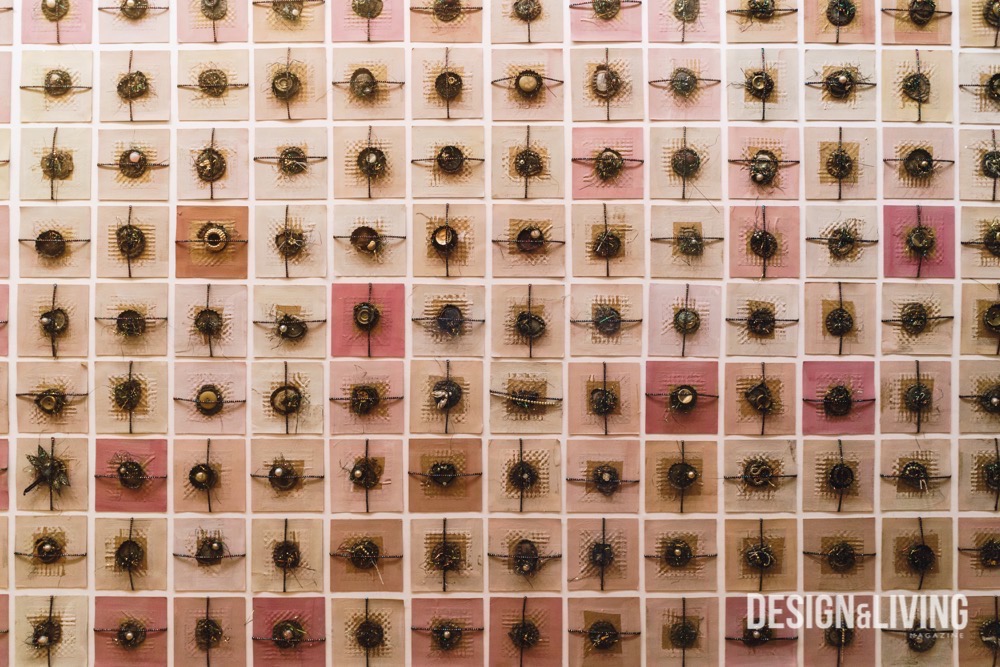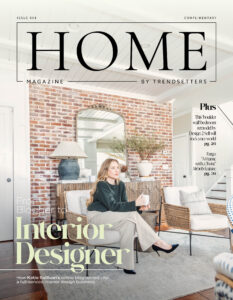Photography by Paul Flessland
When walking around Downtown Fargo, you may wonder who or what resides above the businesses in the historic buildings that line Broadway. Well, high above the hustle and bustle of the busy street is a residential unit that is home to a private art collection. For the first time, these collectors have opened their doors to Design & Living Magazine to help us understand that fine art can be accessible to anyone, regardless of space and budget.

The Collectors
Belonging to two long-time Fargo teachers, this condominium is adorned by the works of local and regional artists including David Norstad, Mike Marth, Dan Jones, Orland Rourke, Meg Peldo, Jay Pfeifer and Charles Beck. Though they have been collecting for 40 years, many of these pieces–especially the more recent additions to their collection–the couple has purchased from Mark Weiler at Ecce Art Gallery.




The Space
In this warm 300 Block condominium, the art-covered walls do not compete with the furniture or fixtures for attention. Each piece is unique, but complements the collection as a whole, which was clearly curated by two individuals with similar taste. Though the condo is modest in size, there is enough space to accommodate future additions to their collection. However, one of the owners joked that they could use another wall.

Weiler acknowledged, “That’s an issue people think about, ‘We have such a small space, or we don’t have a grandiose home.’ There are just so many different ways of hanging, different ways of presenting, and I think that’s also a fear that people have, that they’re not going to do it right. I’ve been in situations where people have bought things and I go to their home six months later and it’s still on the floor. They don’t know where to put it, and that’s fine. That’s a part of the learning process.”

Why Collect?
Stories are very important to this couple. For them, each work of art represents a story that cannot be captured in words. For example, one look can take the collector back to when they first bought a piece. Now, their feelings toward that piece may differ from when they first laid eyes on it, which creates an entirely different narrative. When viewed as a whole, the collection also tells the story of the collectors.
Rules for Collecting
These collectors never try to fill space. They don’t enter a gallery thinking, “I need a Mike Marth for this wall.” Their process is much more organic. Luckily, both husband and wife have similar taste. “I don’t think we’ve ever had a disagreement,” said one of the collectors. “There could be 30 pieces in a row, and we’d probably pick the same piece.”
Investing in the Artist
Some people approach collecting as an investment. For example, when you purchase an original piece of fine art, you know that it is a one-of-a-kind, which can increase in value over time as the artist garners recognition. In contrast, many people spend the same amount of money on a piece of artwork that has been mass-produced, which has little value in comparison. However, this is not the way that our collectors have approached art. Instead, they think of it as an investment in the artist.


Every piece they add to their collection supports a local or regional artist. For example, some of their earliest works are from David Norstad. Those purchases helped Norstad realize that he could make a living off of his art.ment of someone to collecting art as a reflection of the health of a culture and community. I see them as others who, like me, believe that art truly does have value and is a resource to enrich life. When they collect my work, I enjoy some satisfaction and affirmation that someone sees value in my vision. I think it might be the final step to completing each piece, that it moves out of inventory and into someone’s collection.”



The Ease of Collecting
Though the idea of walking into an art gallery might seem intimidating, it is important to know that the curator is there to help and that the gallery owner would not hang a piece unless they saw value in it. Remember that regardless of the collector’s age, space or budget, every collection starts with one piece.
Ecce Art Gallery
216 Broadway N, Fargo
701-298-3223
[email protected]












